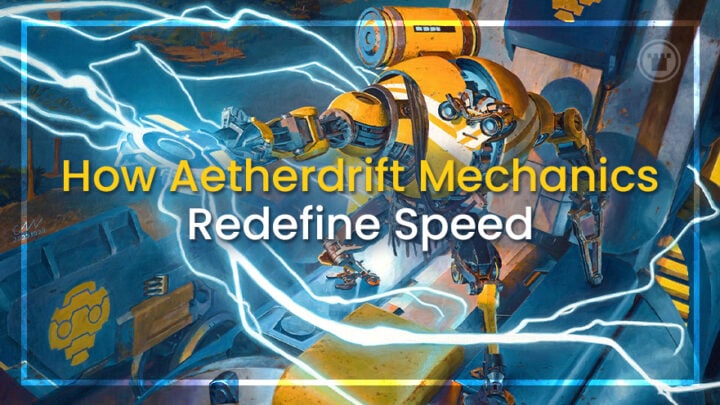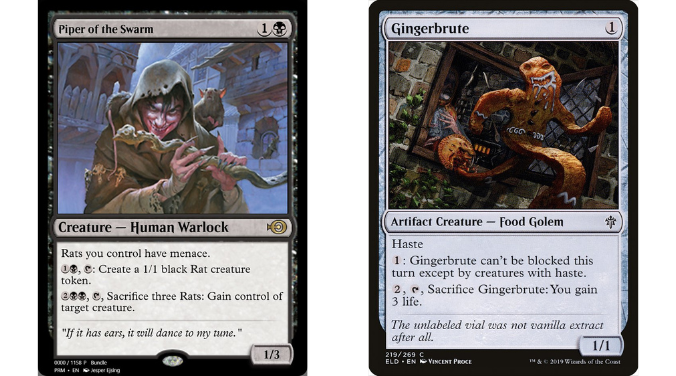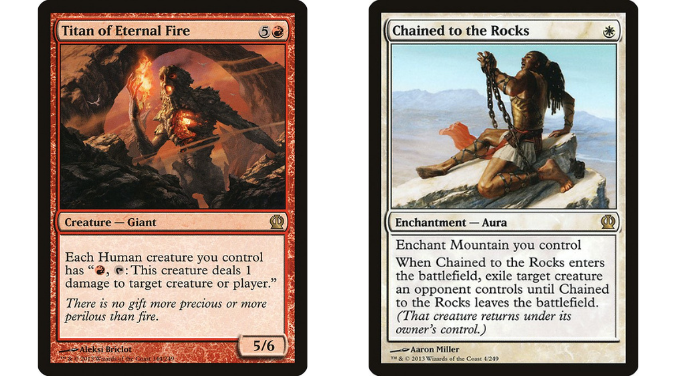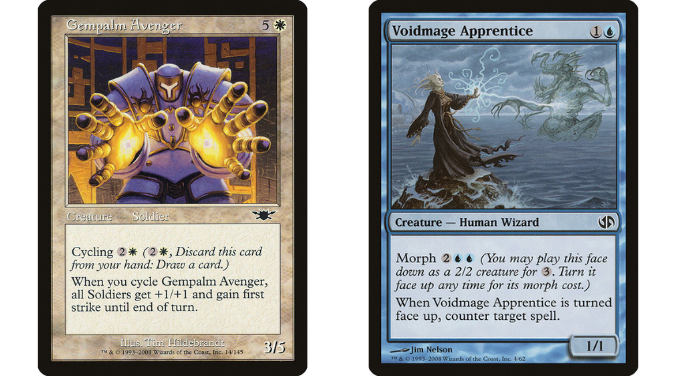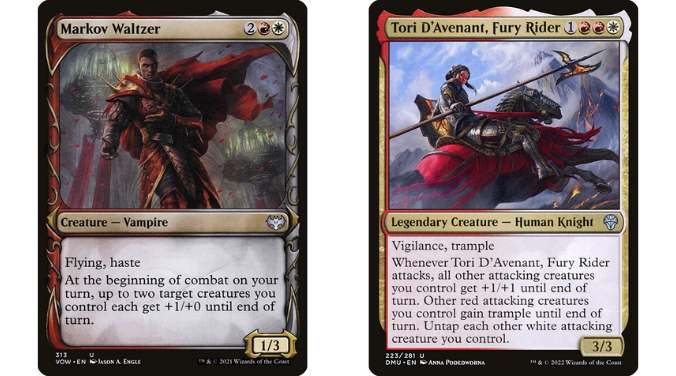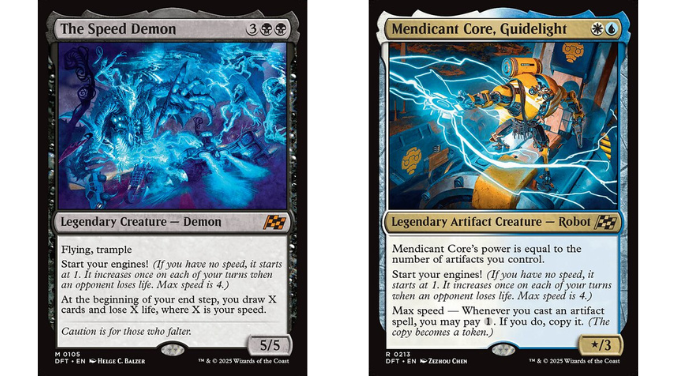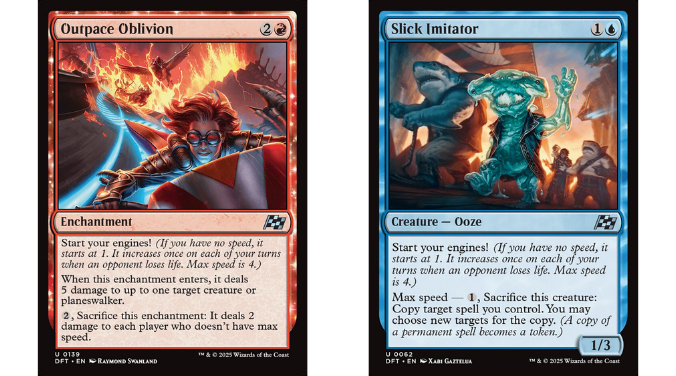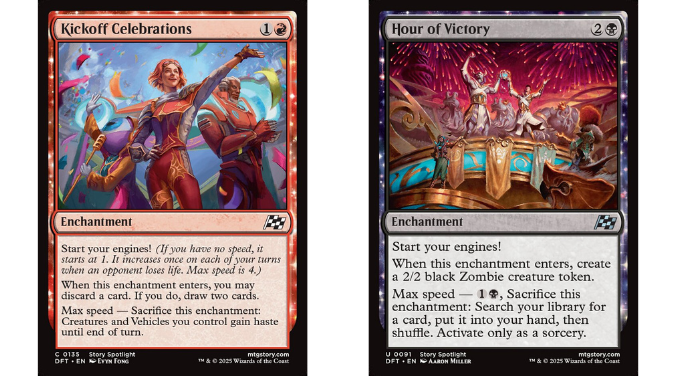I’m writing this piece after my first experience with Aetherdrift over the prerelease weekend and wow, what a rush that was!
I’m a “Melvin” according to Wizards’ well-known player profiles – meaning I’m most excited by cards which use the Magic rules in clever or exciting ways – and it felt like so much of this set really touched that nerve for me. Usually that’s a joy I get from sets with top-down design, where R&D starts with a story and uses Magic mechanics to retell it.
Recognizing the references in these cards imbues them with a lot of character. It also helps us appreciate the expressiveness of Magic’s rules and creativity of its designers. But Aetherdrift doesn’t strike me as one of those top-down sets at all. There’s a few clear inspirations from pop culture in the art and flavor: Speed Racer, Mad Max, Wacky Racers, Death Race 3000, Redline, even a bit of the Orks from Warhammer 40K. But those references aren’t dictating the design of the card effects – this time it’s the other way around.
SHOW THEM THE MEANING OF SPEED
Bottom-up design is a lot harder to define than the top-down kind. You can say confidently that Titan of Eternal Fire and Chained to the Rocks are referencing the myth of Prometheus, but without those cultural reference points it’s hard for outsiders to understand the ideas which inspire specific cards.
The best examples are sets which deliberately unbalance the normal ratios of card types, costs, or colors. Legions is 100% made up of creatures; Alara Reborn is 100% multicolored spells. Mirrodin and Darksteel are predominantly artifacts, while Strixhaven more than doubles the usual amount of instants and sorceries. Torment has twice as many slots for black spells as it gives to any other color.
Giving the set design such an obvious starting point makes it easier to follow the logic that leads to the choices on each card. The Legions design team needed to make creature cards which could fill the role of instant interaction, so the set has a lot of powerful morph and cycling triggers. This is a different kind of creativity to the more celebrated top-down designs, but no less interesting or impressive if you ask me.
What’s especially cool about Aetherdrift is that its overarching identity doesn’t come from overloading on a particular type or color of spell, but on the general concept of “going fast”. It feels like the designers sat down around a whiteboard and brainstormed every possible interpretation of “speed” as applied to Magic gameplay, and then tried to make a set which included all of them at once!
You’ve got the obvious answers in vehicle and mount cards, but also mana acceleration, cheating out big spells, racing through your deck with cycling and milling, and sacrificing life or cards to gain tempo (also captured by the one-time boost of exhaust abilities). Tying everything together is the concept of “racing” as we commonly use it in Magic parlance: the idea that both life totals are steadily ticking down, and your best hope is to focus on making sure theirs goes down faster.
The fact that one of the only non-staple reprints in the set is Bloodghast – maybe the most pure “racing” card ever designed – cements this ethos beautifully.
I’M JUST GETTING STARTED
Maybe this is a niche Melvin opinion, but I think “Start your engines!” (a.k.a. speed) is one of the most impressive mechanics designed in recent memory. If you read my Limited guides (or anyone else’s), think about how often a deck like red-white will be described as “just aggro” or otherwise lacking a strong identity beyond efficient damage-dealing.
The single-minded nature of aggro decks makes it extremely difficult to design mechanics which incentivize that gameplan in a balanced way. If the mechanic makes them better at killing you fast then it’s probably overpowered; if it doesn’t, then they won’t want to use it.
There’s also the issue that most set mechanics are implemented with some kind of setup/payoff dynamic, where your best outcomes revolve around mini-combos of specific cards. But most aggro decks are built with the opposite philosophy; as many cards as possible should be interchangeable, to make sure you’re never waiting around to draw the missing piece or getting shut down by one targeted removal spell.
But the speed mechanic answers all these questions emphatically. It’s also intuitive, flavorful, interacts with cards from every era of Magic, and has a huge amount of potential design space.
You can play a deck with only a single card which cares for your speed and it will function, because the designers ensured every speed card can also be your engine-starter. But you are also obviously rewarded for building a deck with many speed cards, or for pairing an expensive powerhouse like Samut, the Driving Force with openers like Burnout Bashtronaut or Amonkhet Raceway.
How heavily you commit to playing an engine-starter on turn one or having guaranteed ways to reach max speed ASAP depends on what you’re planning to use that speed for. Some speed cards absolutely require you to get max speed online to get best use from them, while others couldn’t care less! I’m just thrilled to see a simple aggro mechanic with so much capacity for nuance in how it’s applied.
The only real knocks I could see against this design are the logistical burden of having another emblem-type player effect to track, and the way that the maximum speed of four occasionally limits how card effects can scale with it. But I actually like that there’s a hard cap and the focus is on hitting that instead of just making number go up forever. Ironically, this is not a mechanic that wants you to waste turns assembling an efficient engine that churns out triggers. You just want to hit it exactly enough times to get across the finish line.
A WELL-EARNED VICTORY LAP
I could probably go into as much detail fawning over how the other mechanics in Aetherdrift embody pre-existing ideas of speed in Magic strategy, like velocity or tempo. It’s fun to see those ideas more literally represented as “speedy” in the card art and flavor, and so far I think they have come together to create an actually very fun gameplay experience.
It’s another quiet achievement of the design team that they have created a Limited set themed around “racing” life without having it skew insanely aggressive like Streets of New Capenna or Murders at Karlov Manor! I think that it all comes down to having really put in the time to come up with more than one definition of “speed” in Magic, so that every color combination can be strategically diverse without feeling out of place.
As the release schedule increasingly seems to favor one-off theme-over-story sets like Thunder Junction, Duskmourn and Aetherdrift, I hope the depth of creativity and effort that’s apparent in these bottom-up design choices can also become a consistent standard.

Tom’s fate was sealed in 7th grade when his friend lent him a pile of commons to play Magic. He quickly picked up Boros and Orzhov decks in Ravnica block and has remained a staunch white magician ever since. A fan of all Constructed formats, he enjoys studying the history of the tournament meta. He specializes in midrange decks, especially Death & Taxes and Martyr Proc. One day, he swears he will win an MCQ with Evershrike. Ask him how at @AWanderingBard, or watch him stream Magic at twitch.tv/TheWanderingBard.

